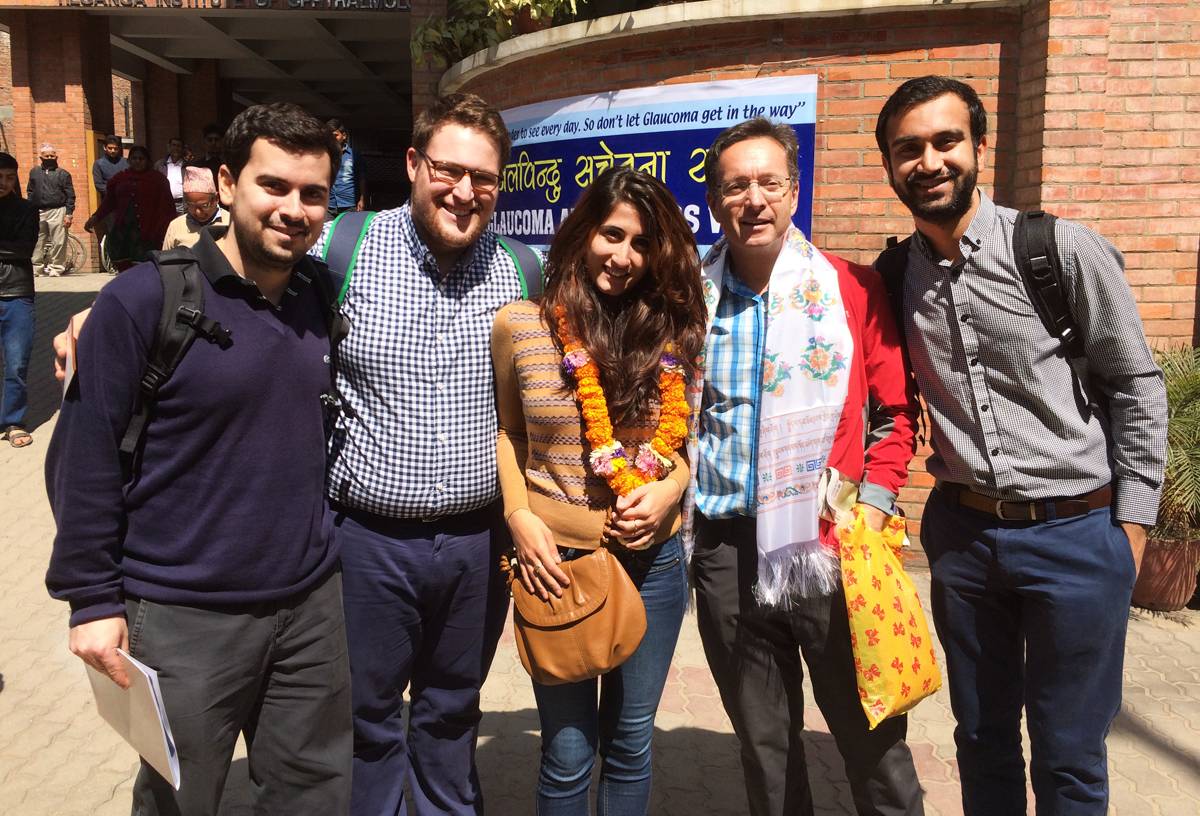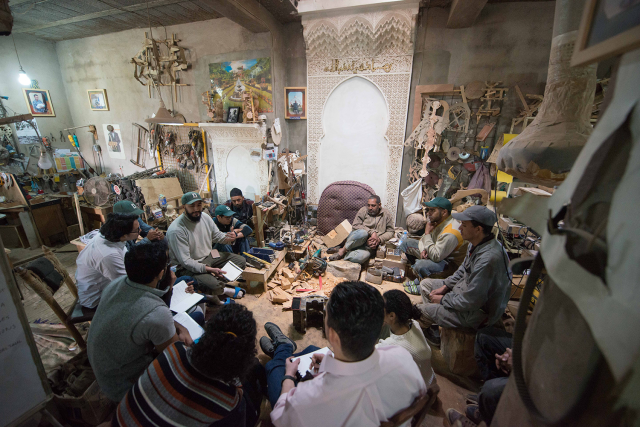In Nepal, A Cure in Sight
The Himalayan Cataract Project is working to eradicate treatable blindness in Nepal.

Twenty-five U.S. dollars. That’s how much it costs to surgically treat most cataracts.
Yet 39 million people in the world suffer from blindness, half of whom are blind due to treatable cataracts. And in Nepal, cataracts represent 70 percent of unnecessary blindness. That’s where the Himalayan Cataract Project comes in.
Founded in 1994 by two ophthalmologists, Dr. Sanduk Ruit and Dr. Geoff Tabin, the charitable nonprofit’s key mission is to eradicate preventable and treatable blindness. The organization was originally conceived to support the eye care efforts of Ruit in Nepal.
While the main Himalayan Cataract Project (HCP) headquarters are in Waterbury, Vt., a satellite office overseen by chief operating officer Emily Newick is right over the bridge from Tuck in Norwich, Vt. Given the close proximity, Newick saw an opportunity to work with Tuck students who could offer consulting services to their partner, a leading eye care center in Nepal founded by Ruit: the Tilganga Institute of Ophthalmology.
Newick is now working with five first-year Tuck students—Henrique Bahr, Kiran Jinsi, Joao Naccarato, Anmol Tiwari, and Matt McGrath—as part of their First Year Project (FYP). Students are required to work with real clients during their first year, and help them address complex business challenges. The students were tasked with helping Tilganga strengthen its management practices and implement a five-year plan to reach financial self-sufficiency, which was previously outlined by an outside consulting firm.
Working with HCP and Tilganga presented Matt McGrath T’16 with a unique opportunity: to work with a nonprofit for the first time and with an international client. He’ll be heading to Land O’Lakes this summer to work in corporate strategy, and he hopes to be involved with the company’s international expansion program.
“I’m interested in international work and getting outside of my experience,” he says. “I thought personally I could add some value for [Tilganga] while getting a chance to go to Nepal and see a part of the world I’ve never been to before.”
Over spring break—before a devastating magnitude 7.8 earthquake hit Nepal—McGrath and three of his FYP classmates traveled to Kathmandu to see Tilganga themselves. While it didn’t look like a traditional hospital, they were impressed by how much a small staff of 500 could accomplish: Last year, Tilganga served over 400,000 patients and conducted over 30,000 eye surgeries. It also operates 16 primary eye care clinics in rural regions across Nepal, manufactures its own intraocular lenses (which are used in cataract surgery), and has a refractive surgery center.
“The scale of what they do with relatively few people is incredible,” says McGrath.
Part of the problem for Tilganga is that its small staff is comprised primarily of doctors and surgeons who spend most of their time dedicated to patient care, in clinic, or in surgery—leaving few people to help run the hospital. McGrath and his classmates are making recommendations about who would be right for a top management job, and the steps needed to set future managers up for success. The students are also working with the hospital to develop standard processes around their budget and accounting practices.
“At the end of the day, they exist to help people and perform eye surgeries, so they don’t really have a lot of time to focus on management best practices,” says McGrath.
Since the earthquake hit, Tilganga has been busy leading relief efforts in Kathmandu and in the rural regions around their clinics. While the staff at Tilganga have been treating eye trauma, they’ve also been delivering relief supplies to thousands of affected families. The Himalayan Cataract Project has raised over $305,000 since the earthquake struck—100 percent of which will go toward relief efforts.
To support their client’s relief work in Nepal, McGrath and his classmates sent fundraising emails around to the Tuck community and received $1,600 in the first 24 hours. In the end, they raised over $6,000.
McGrath and his four classmates are the first students from Tuck to work with the Himalayan Cataract Project and Tilganga. McGrath says working with a nonprofit that has such a strong mission has been gratifying, and he would recommend working with the client to future Tuck students.
“As the Global Insight Requirement comes into play for the T’17s, I think, selfishly, and from a student experience perspective, having a client like [Tilganga] as an opportunity is really interesting,” he says.
Emily Newick, the COO of the Himalayan Cataract Project, says a big benefit of being located in the Upper Valley is the connection to academic institutions like Tuck and Dartmouth.
“We have loved the interaction with Tuck and the Tuck students and hope it's the start of a long-term relationship,” says Newick. “From our perspective, there is no shortage of projects for interested Tuck students.”

